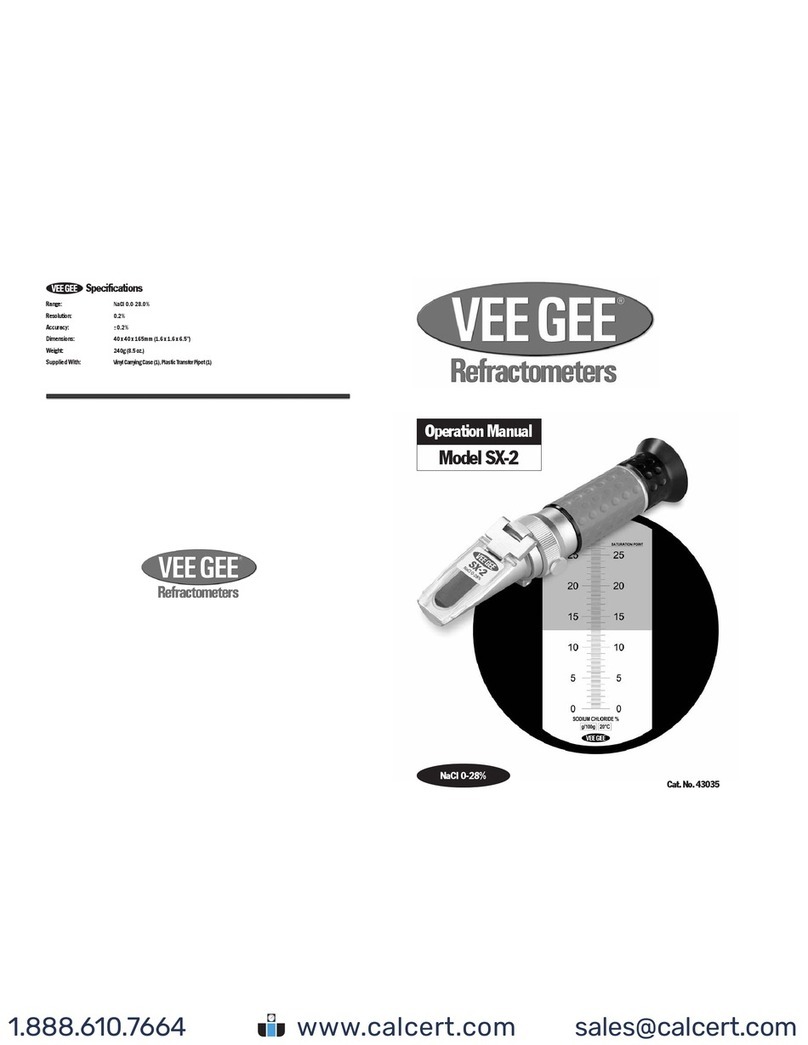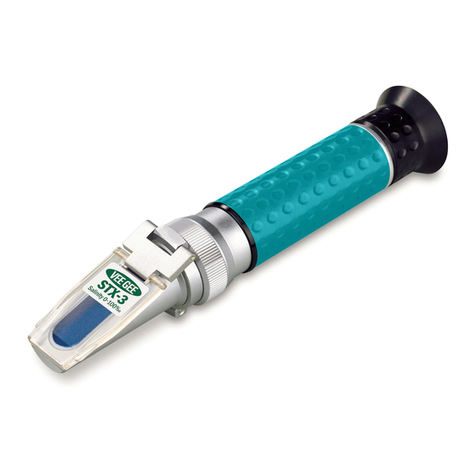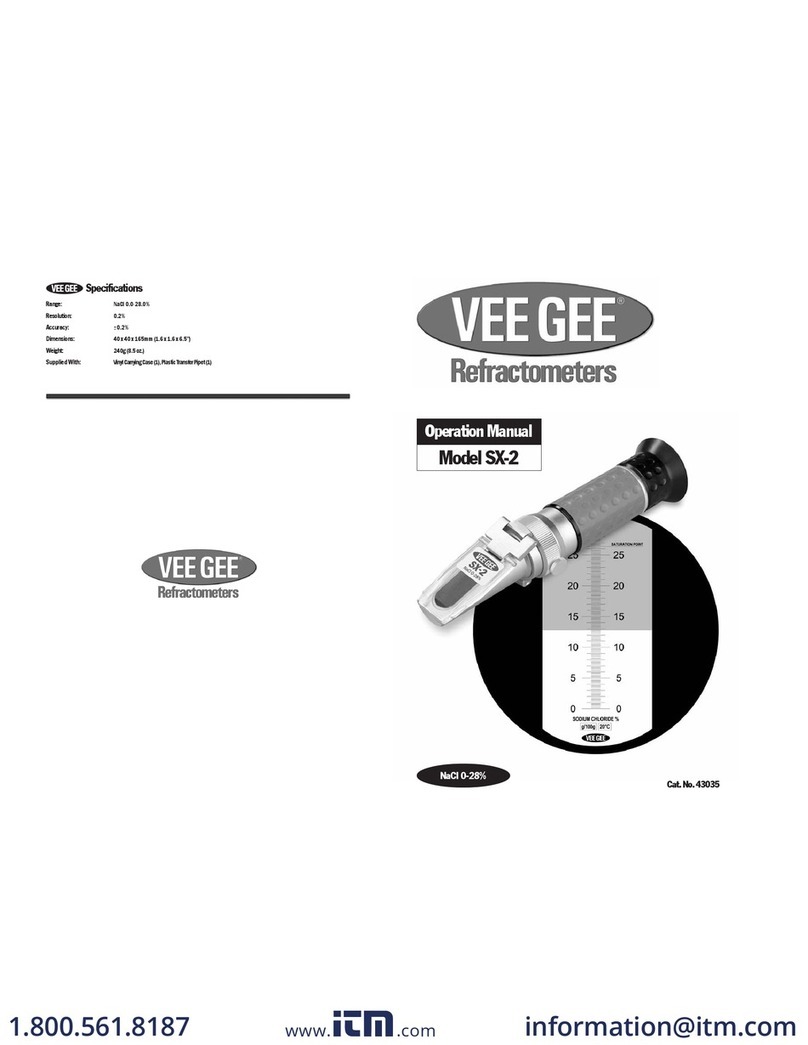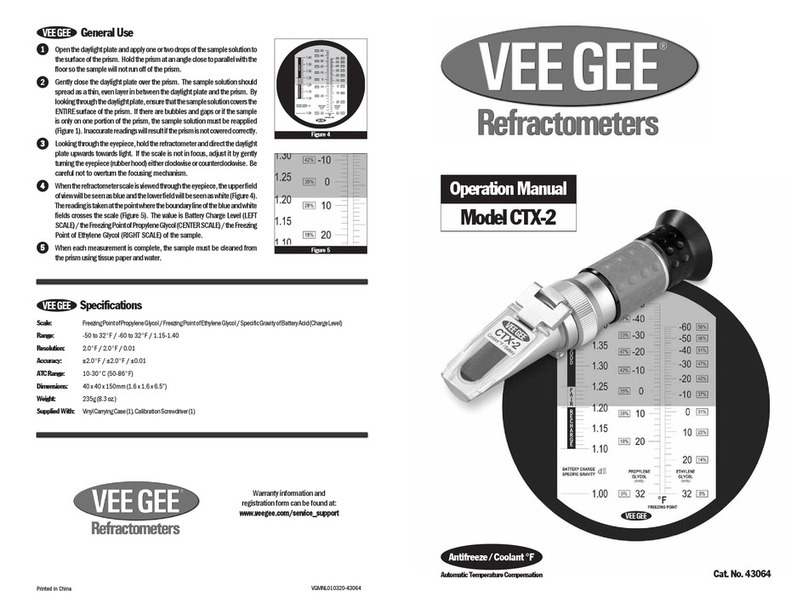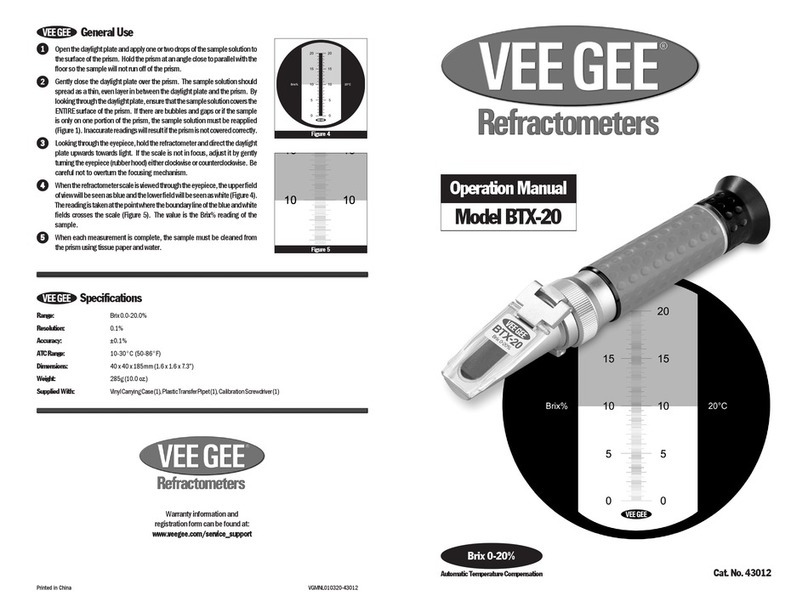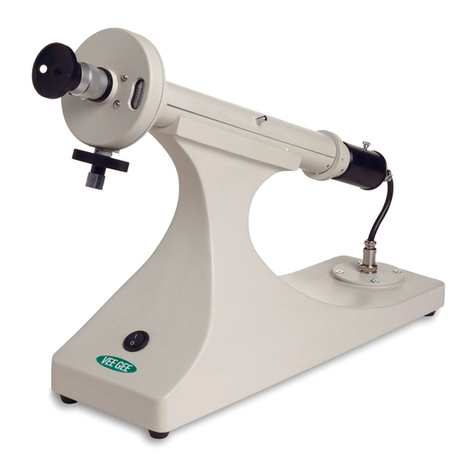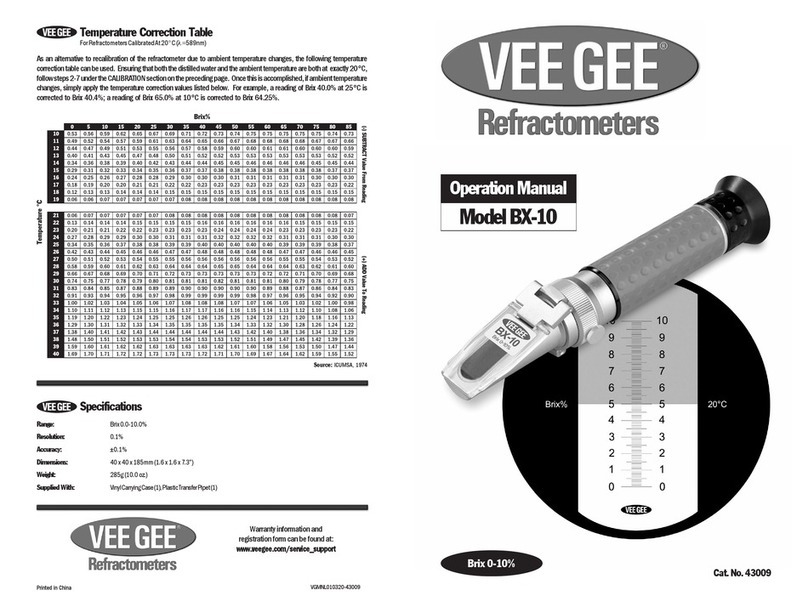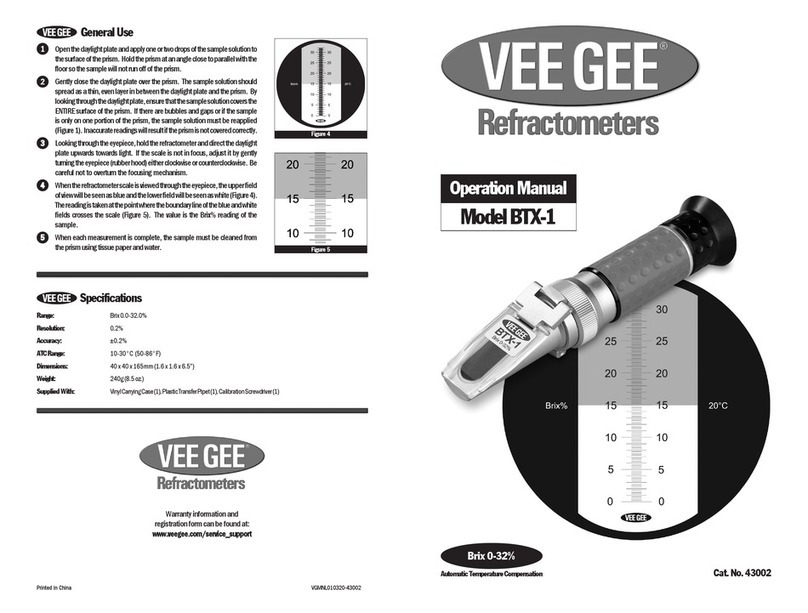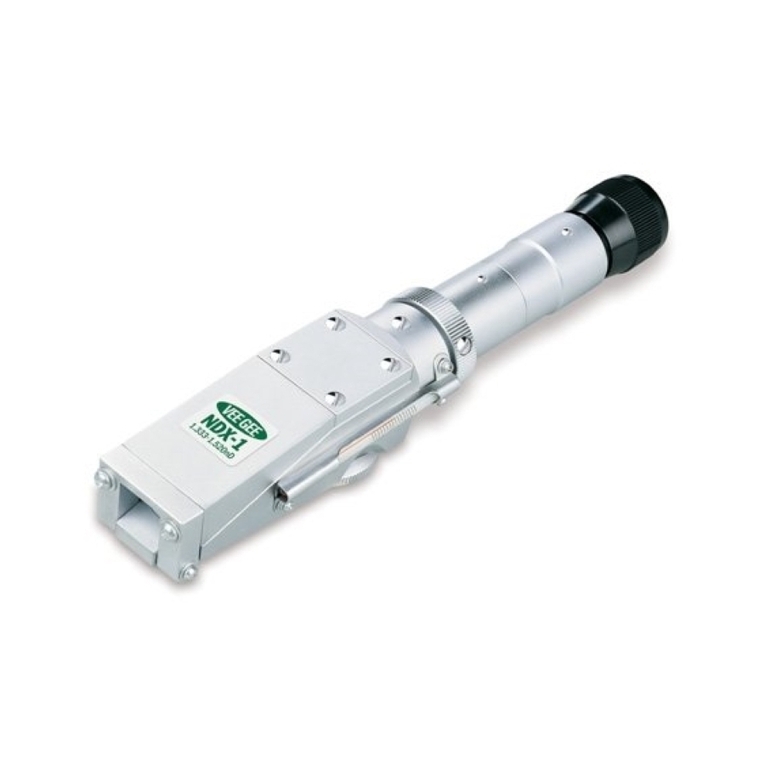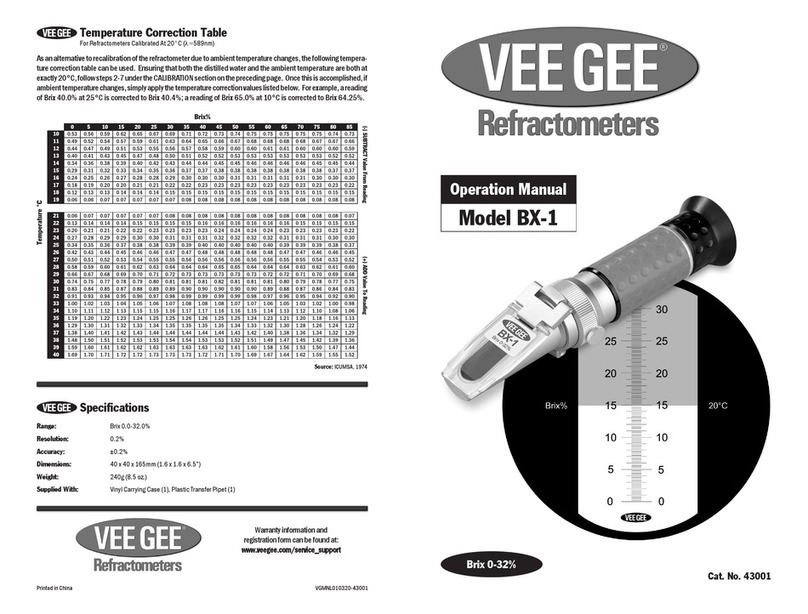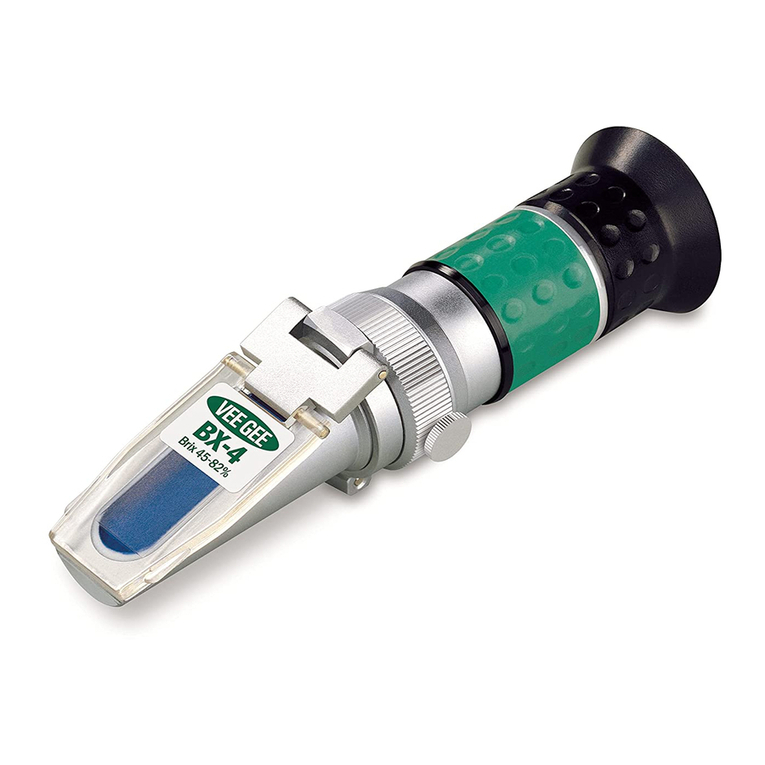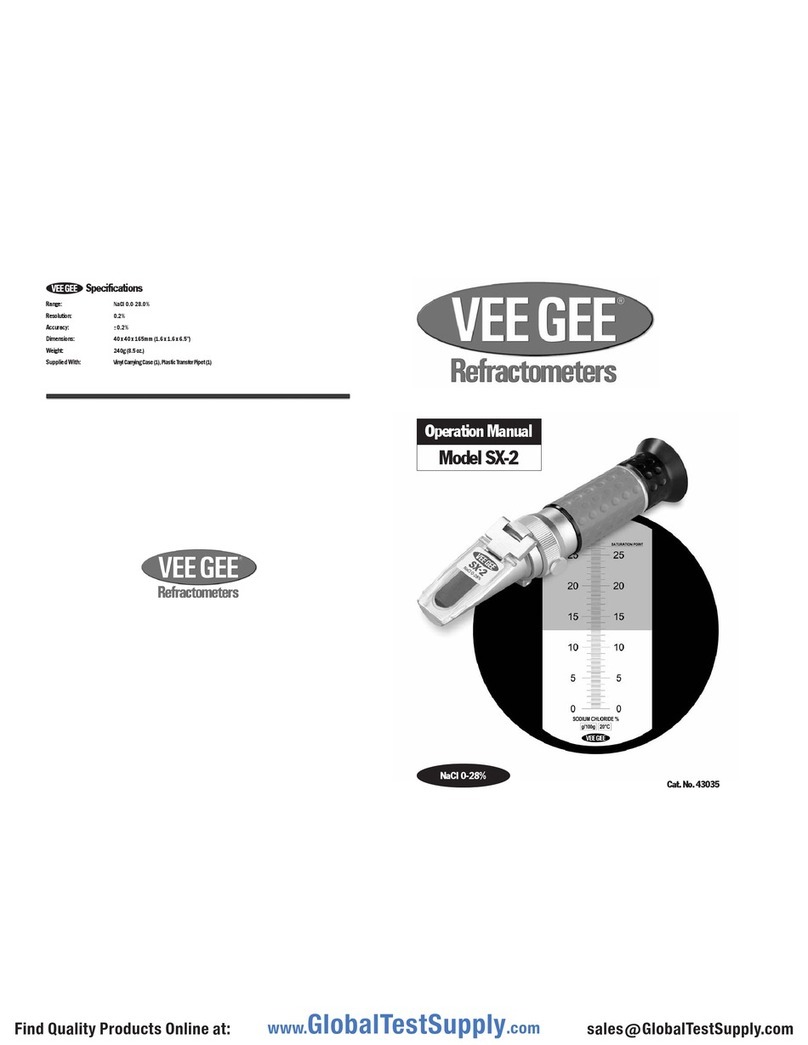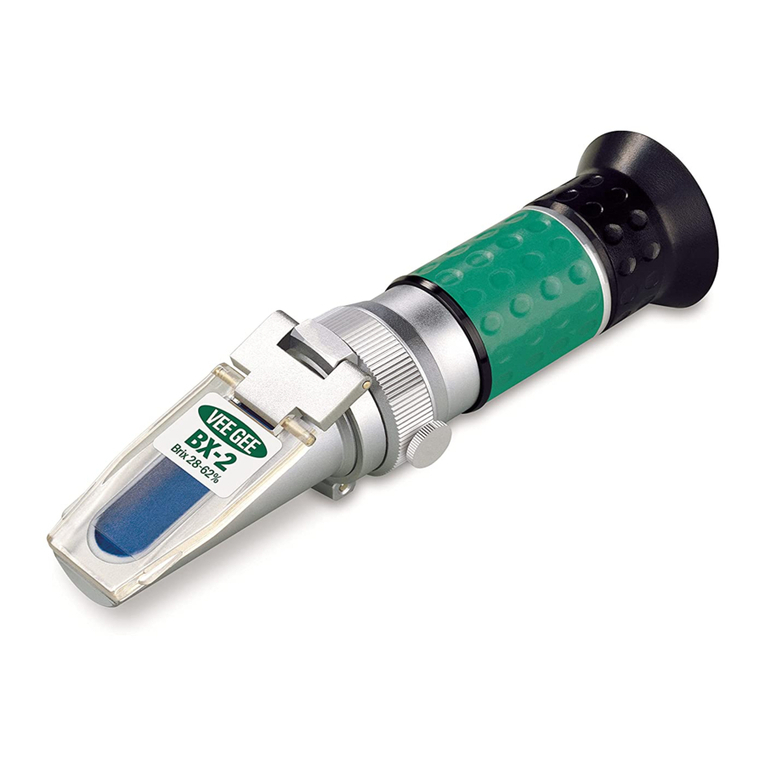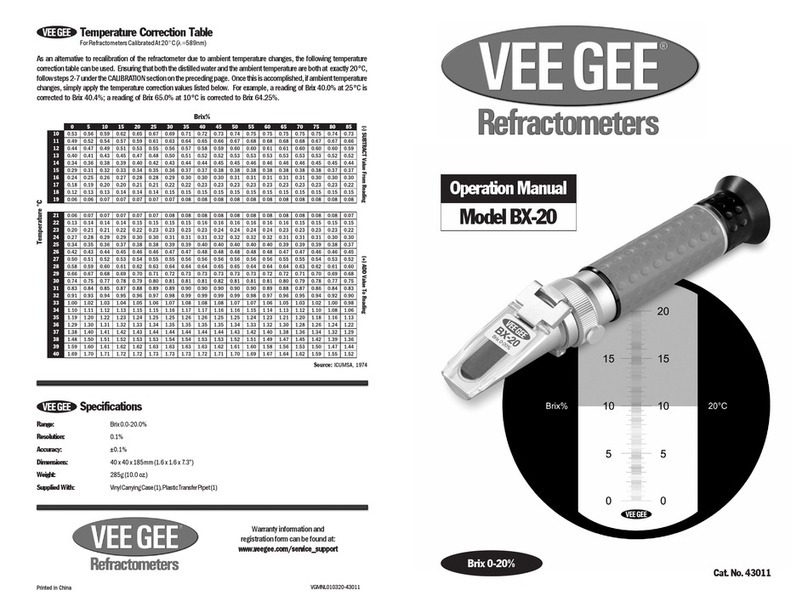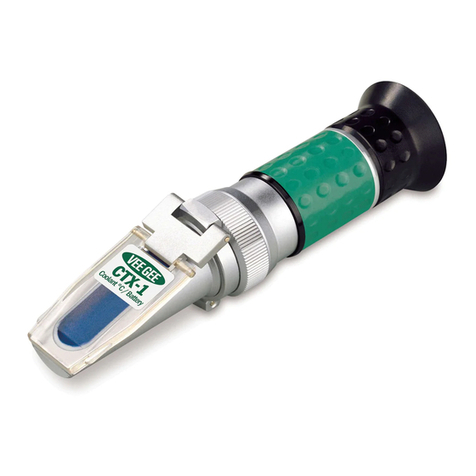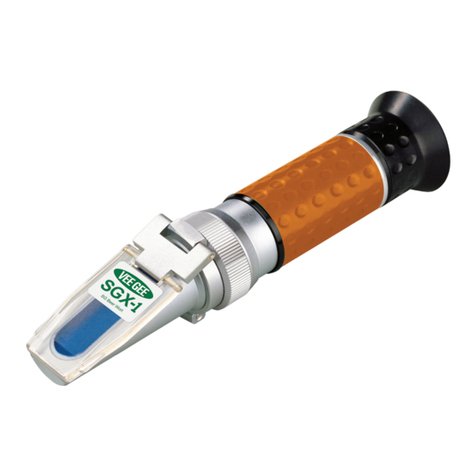
Itisconsideredgoodlaboratorypracticetocalibrate this refractometer on a daily basis. We recommend performing the liquids
calibration procedure daily, and performing the solids calibration procedure at least weekly.
Liquid Calibration
1. Unlock and open the secondary prism.
2. Place one or two drops of distilled water on the primary prism.
2. Close and lock the secondary prism. Be sure the liquid covers the prism surface completely, without any gaps or bubbles.
3. Adjust the scale illuminator to provide the best illumination for the display.
4. Open the light cover.
5. Close the prism reflector.
6. Focus the eyepiece on the crosshair.
7. Turn the adjustment knob to find the position of the halftone boundary line.
8. Turn the dispersion adjustment knob to remove color from (and sharpen the image of) the boundary line.
9. Turn the scale adjustment knob until the boundary line intersects with the crosshair.
10. Distilled water should read 1.3330 nD or Brix 0.0%. If it does not, use the screwdriver to adjust the calibration set screw
to move the line to the correct position.
Solids Calibration
1. Unlock and open the secondary prism.
2. Place one drop of bromonaphthalene on the primary prism.
3. Place the glass standard on the primary prism, polished side down.
4. Turn the scale adjustment knob to the refractive index value etched on the glass standard.
5. Adjust the scale illuminator to provide the best illumination for the display.
6. Close the prism reflector.
7. Focus the eyepiece on the crosshair.
8. Turn the dispersion adjustment knob to remove color from (and sharpen the image of) the boundary line.
9. Theboundarylineshouldlieinthecenterofthecrosshair. Ifitdoesnot,use the screwdriver to adjust the calibrationsetscrew
to bring the line into the correct position.
Calibration
4 5
The temperature of the prism assembly can be regulated with the use of a constant temperature circulator. This will improve
the accuracy of the refractometer.
1. Connect the circulator to the inlet and outlet adapters for both the primary and secondary prisms. A thermometer is
provided the read the temperature of the prism assembly.
2. To connect the thermometer, first unscrew the protective black cap.
3. Insert and thread the thermometer into the thermometer holder until fully sealed. DO NOT OVERTIGHTEN.
WARNING: The thermometer used with this instrument contains mercury, a US Government classified
hazardous material. Inhalation of mercury vapor can cause kidney and central nervous system damage
varying upon the level of acute or chronic exposure. If broken, the mercury must be disposed of in
accordance with applicable laws and regulations.
Connecting A Circulator
To find the refractive index or Brix value value of any transparent or translucent liquid, the steps are similar the the calibration
procedure.
1. Place 2-3 drops of the sample liquid on the surface of the primary prism.
2. Close and lock the secondary prism. Be sure the liquid covers the prism surface completely, without any gaps or bubbles.
3. Adjust the scale illuminator to provide the best illumination for the display.
4. Open the light cover.
5. Close the prism reflector.
6. Focus the eyepiece on the crosshairs..
7. Turn the adjustment knob to find the position of the halftone boundary line.
8. Turn the dispersion adjustment knob to remove color from (and sharpen the image of) the boundary line.
9. Turn the scale adjustment knob until the boundary line intersects with the crosshairs.
10. The refractive index or Brix value can be read from the scale beneath the crosshairs.
Measuring Liquids
1. Thesample must have asmooth, polished surface. Placeone drop of bromonaphthalene on the smoothsurface and place
it on the primary prism (smooth side down).
2. Adjust the scale illuminator to provide the best illumination for the display.
3. CLOSE the prism reflector.
4. Focus the eyepiece.
5. Turn the dispersion adjustment knob to remove color from (and sharpen the image of) the boundary line.
6. Turn the scale adjustment knob until the boundary line intersects with the crosshair.
7. The refractive index or Brix value can be read from the scale beneath the crosshair.
Measuring Transparent Solids
1. Thesample must have asmooth, polished surface. Placeone drop of bromonaphthalene on the smoothsurface and place
it on the primary prism (smooth side down).
2. Adjust the scale illuminator to provide the best illumination for the display.
3. OPEN the prism reflector.
4. Focus the eyepiece.
5. Turn the dispersion adjustment knob to remove color from (and sharpen the image of) the boundary line.
6. Turn the scale adjustment knob until the boundary line intersects with the crosshair.
7. The refractive index or Brix value can be read from the scale beneath the crosshair.
Measuring Translucent Solids
http://www.novatech-usa.com/Products/Laboratory-Equipment-Supply-Products Tel: (281) 359-8538 Toll Free:(866) 433-6682
